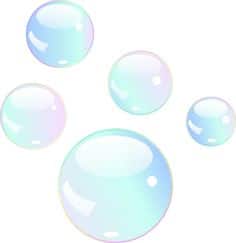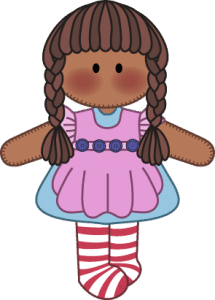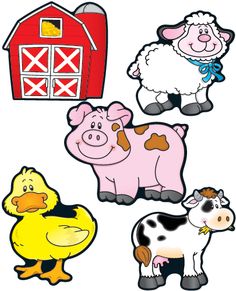Toys, toys, toys! Not only can they be used for play, but also for teaching and preparing your child for school. There are all kinds of expensive educational toys available in stores today, but sometimes all it takes are the classics to introduce young kids to the basics of vocabulary, language concepts and following directions.
Did you know that 26.4% of Ohio children ages 0-5 are living in poverty? We’ve made it our mission to help all children be ready for school, because early language development is crucial to a child’s cognitive development and later success in life.
Here’s a handy list of five common toys you probably already have in your home, with a short explanation on how each one can help you teach your child in a fun and engaging way:
1. Blocks!
Blocks are a great tool for building words and constructing buildings and towers! While playing, consider introducing your child to some basic vocabulary and language concepts:
- Vocabulary ideas:
- Block
- Build
- Bridge
- Steps
- Push
- Stack
- Turn
- Fall
- Put
- …and any other words you want to teach or spell!
- Sample Language Concepts:
- This block is on the table.
- This block is under the chair.
- The ‘A’ block is in the back of the pile.
- The ‘C’ block is in the front of the pile.
- I’m holding the block up.
- This block is in my lap.
- I took the ‘D’ block out.
- This block fell down.
- You have more than me.
- These blocks are different.
- That tower is as tall as you!
- This tower is short.
- We have the same block!
- I have less blocks than you.
- That pile is big.
- This block is little.
- There are many blocks.
- There are few blocks.
- This block is hard.
- This block is square.
You can also use these basic vocabulary and language concepts to practice simple directions!
- Following Directions
- Put the block in the shoe.
- Give me the block.
- Push the block.
- Build a tall tower.
- Turn this block.
2. Bubbles!
Who doesn’t love bubbles? Here are ways you can turn play time into a bubbly learning session!
- Vocabulary ideas:
- Bubble
- Blow
- Pop
- Catch
- Reach
- Chase
- Break
- Wave
- Shake
- Turn
- Twist
- Move
- Sample Language Concepts:
- That bubble went far!
- Look how shiny it is.
- These bubbles are round.
- The wand is close to your mouth!
- Blow out.
- I put the wand in the bottle.
- That bubble is going up!
- The bubbles are gone.
- This one is bigger than that one.
- This bubble is the biggest.
- That bubble is high!
- This one is floating low.
- How many are there?
- This bubble is going down.
- Here are more bubbles!
- Look how big this one is!
- That bubble is little.
- This bubble is moving slow.
- They’re moving fast!
- This one is not big.
- There are no bubbles.
And, like the blocks, you can practice following directions with the new vocabulary and language concepts.
- Following Directions:
- Shake the bubbles.
- Blow a bubble.
- Give me the bubble wand, then tell me what you did.
3. Doll
Baby dolls, Barbie dolls, action figures and GI Joe dolls are all great ways to practice words and concepts that relate to the human body.
- Vocabulary ideas:
- Eyes
- Nose
- Hair
- Ears
- Mouth
- Legs
- Arms
- Teeth
- Hands
- Foot
- Toes
- Fingers
- Belly
- Back
- Chin
- Cheek
- Knee
- Elbow
- Dress
- Blanket
- Pants
- Shirt
- Socks
- Shoes
- Boots
- Diaper
- Bottle
- Sample Language Concepts:
- The doll’s hair is messy!
- What a pretty outfit!
- Uh oh, the doll’s face is dirty.
- This baby needs a drink.
- GI Joe wants to eat.
- Go to sleep.
- Let’s have the doll walk over here.
- Do you want to hold the baby?
- Let’s hug her.
- I’m going to brush her hair.
- Let’s wipe this spot off.
- We need to change this diaper.
- Why don’t you sing to the baby?
- I just gave the doll a kiss!
- I think it’s time to wash her.
- Following Directions:
- Give the baby a kiss.
- Brush her teeth.
- Feed the baby.
- Wipe the baby’s mouth.
- Pat baby on the back.
- Sing to the baby.
- Rock the baby.
- Change the baby’s diaper.
- Make the doll walk.
- Put the doll to sleep.
- Tickle the doll.
- Take the baby’s dress off.
4. Play House & Furniture
Maybe it’s that antique house you had as a child or the modern house or play building that kids love today, play houses are wonderful for language development!
- Vocabulary ideas:
- House
- Door
- Car
- Bell
- Window
- Chair
- Table
- Bed
- TV
- Steps
- Stove
- Sink
- Mommy
- Daddy
- Baby
- Dog
- Eat
- Go
- Stop
- Wait
- Push
- Hot
- Up
- Stuck
- All Gone
- Sleep
- Hide
- Help
- Sample Language Concepts:
- Hide under the bed.
- Walk up the stairs.
- Come down the steps.
- Look inside the house.
- Put the car in the garage.
- Take the car out of the garage.
- Following Directions:
- Ring the doorbell.
- Open the door.
- Close the door.
- Put Daddy in the car.
- Put the baby in bed.
- Make Mommy sit down.
5. Barn & Animals
Old MacDonald has more up his sleeve than just E-I-E-I-O! Use the animals to make learning fun.
- Vocabulary ideas:
- Cow
- Horse
- Dog
- Chicken
- Pig
- Cat
- Duck
- Man
- Wagon
- Tractor
- Barn
- Door
- Fence
- Tail
- Hat
- Hi!
- Bye!
- Night-night!
- Water
- Open
- Out
- In
- Pull
- Go
- Walk
- Eat
- Drink
- Sample Language Concepts:
- Put the cow in the barn.
- Take the pig out.
- Put the chicken on the fence.
- The dog runs around and around.
- The horse jumps over the fence.
- Following directions:
- Open the door.
- Listen! The cow says “moo!”
- Close the door.
- Make the cow walk.
- Make the dog run.
- Make the horse jump.
- Make the pig eat.
- Make the chicken go to sleep.
- Make the cow drink.
Don’t have these toys? These are only some of our favorites, but the same kinds of lessons can be taught with all kinds of other toys! Get creative and help your child enjoy play time in an educational way. Let us know your thoughts and successes!




